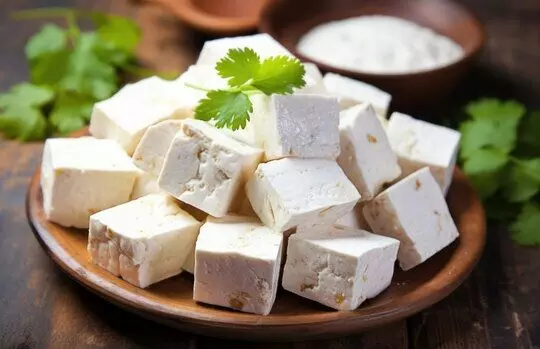Explainer: Real Vs fake panner–Here’s how you spot the difference
Panner, If made from starch or synthetic substances, it may start dissolving or becoming slimy
By Sri Lakshmi Muttevi
Representational Image.
Hyderabad: Adulterated food is one of the most concerning issues in society now, along with ineffective kitchen management and expired foods languishing in improper storage. But have you heard about the ‘fake panner’, the new food scam in the market?
What is fake panner?
Analogue paneer, also known as fake or synthetic paneer, is a substitute for traditional paneer, made using cheaper non-dairy ingredients. Unlike real paneer, which is made from fresh milk curdled with lemon juice or vinegar, analogue paneer typically contains vegetable fats, starches etc.
Many recent instances have come to light about the usage of fake panner and its adverse effects:
- In February 2025, a vlogger from Haryana shared on Instagram (@nikhilspreads) how fake paneer is used for making bread pakoras sold in roadside stalls. To show the difference with the real thing, in his video, he poured Iodine solution on a fake panner which turned black, while the real panner stayed the same.
- In January 2025, a special operations group (SOG) in Rajkot seized around 800 kg of adulterated paneer made and stored in unhygienic conditions in Gujarat Foods Factory near Sheetal Chowk.
- In October 2024, Zomato faced backlash for selling fake paneer to restaurants through its B2B business service, Zomato Hyperpure. Although the product was clearly labelled ‘Analogue Paneer’ on the Zomato Hyperpure website, it is marketed as ‘fit for tikka and gravy paneer dishes’ by the manufacturer,9 a slightly sweet or neutral taste.
Fake Paneer: May have a chemical-like or soapy smell, with a bitter or odd taste.
3. Water test
Real Paneer: When placed in hot water, it remains soft and retains its texture.
Fake Paneer: If made from starch or synthetic substances, it may start dissolving or becoming slimy.
4. Iodine Test (For starch detection)
Take a small piece of paneer and add a few drops of iodine solution (available in medical stores), and it turns black or blue.
Real Paneer: No colour change.
5. Oil/Frying Test
Real Paneer: When fried, it turns golden brown evenly.
Fake Paneer: May release excess oil, becomes too hard or stays white even after frying.
6. Dissolution in Water
Place a piece of paneer in warm water for 10-15 minutes.
Real Paneer: Retains its shape and texture.
Fake Paneer: May start breaking down or releasing an oily layer.
7. Stretch Test
Real Paneer: Breaks apart when pulled, without stretching.
Fake Paneer: May stretch like rubber due to synthetic additives.
Speaking to NewsMeter Dr Meghana Reddy, a nutritionist from Hyderabad, said, “Fake paneer is often made using starch, synthetic milk or low-quality fats, which lack the essential proteins and calcium found in real paneer. Consuming adulterated paneer regularly can lead to digestive issues, weakened immunity and long-term health risks. A simple test to check for purity is to drop a piece of paneer in boiling water—if it dissolves or turns slimy, it is likely adulterated. Opting for fresh, locally sourced paneer is the best way to ensure safety and nutrition.